The Sunset March in Nijmegen, Netherlands: Our Experience Participating in the Sunset March in Nijmegen, and Why You Should Add it to your Travel Wish List
When the clock strikes 4:26pm, our conversation stops abruptly, and our small group falls into a meditative silence and starts marching.
I can’t remember who sets out first, but it happens quickly and without hesitation. I fall into the second position, walking behind our group’s leader, with only a vague idea of where Geoff is. I know he’s trailing behind us, trying to capture photos of the ritual while also participating, and I can hear the click of his camera shutter now and then.
It’s cool out, the sky a dull grey, and I’m in that shivery stage of transition between sweaty and freezing, having had to practically run from downtown Nijmegen to The Crossing for fear of missing the whole damn thing. We’d been out exploring parts of the Liberation Route since 8am — 25,000 steps on my Fitbit, and not even done yet — on a day that had started with an emotional bang when we visited my great uncle’s war grave in Oosterbeek.
Now, we knew, it was going to end the same way.
To be honest, the Sunset March didn’t sound like it would be particularly inspiring when we first heard about it. But then we did it, and realized how wrong we were.
This part of the Netherlands is full of stories that will keep you up at night. And the Sunset March is about remembering one of them.
It’s small, but it’s meaningful. And it matters that you come here. Today, more than ever.
Nijmegen is the oldest city in the Netherlands, and the largest city in Gelderland.
Sitting in the center-east of the country and bumping up against Germany, Gelderland today is a comfortable place to be. These days, it’s not uncommon for Gelderlanders to cross into Germany and back when driving between Groesbeek and Nijmegen – it’s the fastest route, and there are no border controls.
Back in the middle of the twentieth century, however, Gelderland’s location was strategic (read: deadly). Nijmegen was the first Dutch city to be taken by Nazi Germany’s Blitzkrieg in May, 1940. And from that day until the war ended, the province was the site of deadly battle after deadly battle, civilian tragedy after civilian tragedy.
One of which took place in the spot we’re marching at today.
(Skip map to keep reading)
Sunset March: Practical Info & How To
If you’re planning a remembrance trip to Gelderland, participating in the Sunset March is a must-do. The group that runs the daily event updates the start time on their website every day, so be sure to check it so you know when to arrive.
We’d also recommend you download the excellent Liberation Route app on your phone (iPhones and Androids). There are dozens of historical WWII stops in Gelderland, and the Liberation Route is a not-for-profit org that’s dedicated to helping you find each spot, and learn about it on your travels.
We’d recommend you base yourself in Nijmegen, which is a larger city than the capital of Arnhem. We stayed right beside the train station at the Mercure Hotel (affiliate link), which ended up being uber convenient for travelling around the region and exploring Nijmegen itself.
By design, our stride matches that of a quick military march.
There are 7 participants, including 3 Dutch veterans, and we walk in single file, keeping to one edge of the bridge’s pathway to stay out of the way of runners and cyclists going about their daily routines.
We’re crossing De Oversteek, a modern car and pedestrian bridge spanning the River Waal, and we’re keeping pace with the deliberate lighting of the bridge, lamp pole by individually illuminating lamp pole, 48 in total.
The name of the bridge — De Oversteek — means ‘the Crossing.’ It’s a reference to the Waal River Crossing, a deadly battle during Operation Market Garden in WWII. And the 48 lights reference the 48 American soldiers who lost their lives during the battle, part of the Allies’ attempts to liberate the Netherlands and force the end of the war.
This march we’re on is daily tribute to an event that took place more than 70 years ago. Once a day, every day, in the rain, sun, snow or storm.
It’s unexpectedly moving, and my mind can’t help but wander to find the lesson buried within, the one that’s surely relevant today.
It never ceases to surprise me how much being in the place where the worst of humanity has been displayed — Cambodia’s Killing fields, Auschwitz, the battlefields and graveyards of the world wars — can pack so much more emotional punch than learning about it from the pages of book, or behind a screen.
As we march, and as each of the 48 lamps illuminate one-by-one before me, my imagination wanders. I picture American soldiers in canvas boats crossing the fast-flowing river below, fighting against the current and losing their lives to enemy fire.
And I picture the lives of everyday Dutch whose lives changed overnight, and who suffered under enemy rule for 5 years. The Dutch, you see, were caught off guard when Germany invaded without a declaration of war in May 1940; they had been clinging to the hope neutrality would protect them, as it had in WWI, and weren’t prepared to resist Germany’s show of strength.
Being in this part of the world at a time when news alerts about the continuing relevance of NATO pop-up almost weekly on my phone, the world’s superpower seems to be taking an inward turn to the isolationism of the past, and the world and its many simmering conflicts seem primed to boil over, I can’t help but wonder if we’re in for an equally large shock in the years to come.
I can’t help but wonder why we can’t learn from the lessons of the place in which we’re standing, marching, and remembering.
When we reach the other side of the bridge, our group leader points behind me, gesturing for me to turn around just in time for all the lights to flash on together, in a show of unity.
My eyes well up.
To finish the Sunset March, we walk silently down the stairs of the pedestrian bridge to a monument on the bank of the Waal for a final ritual: a veterans’ salute in front of a monumental slab, the names of those Allies who were killed during the Waal crossing engraved on its front.
Gone but never forgotten, especially in the Netherlands, where the lessons of the past are baked into the lives of the present. Because god forbid we ever forget how quickly things can change.
We were guests of The Liberation Route while in Gelderland, and used the Liberation Route App and their website while exploring Arnhem, Nijmegen and Oosterbeek. All opinions remain our own.
Read More About Our Travel in the Netherlands by Checking out these Suggested Posts, or Visiting our Netherlands Home Page

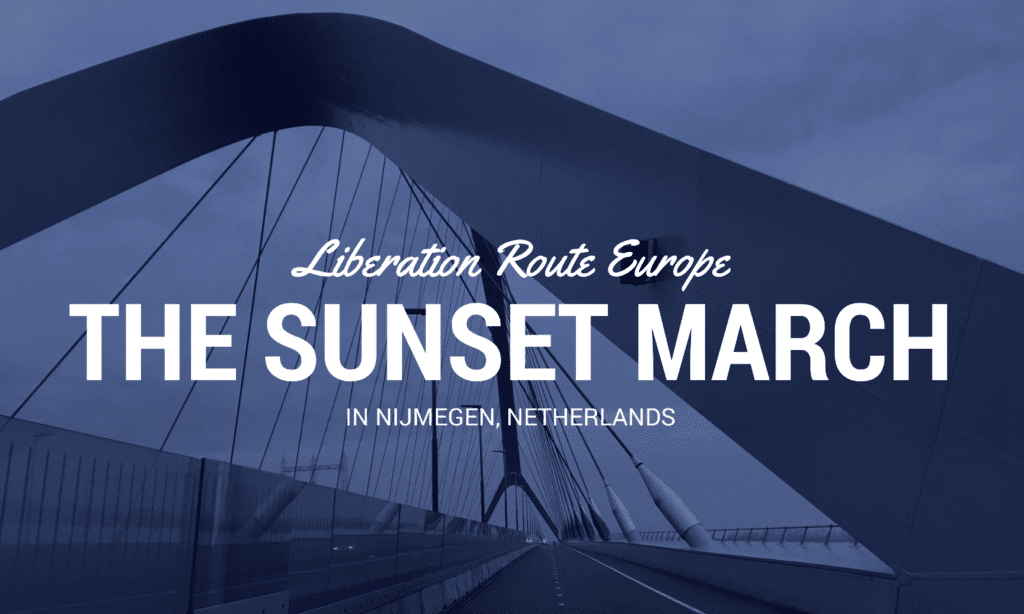
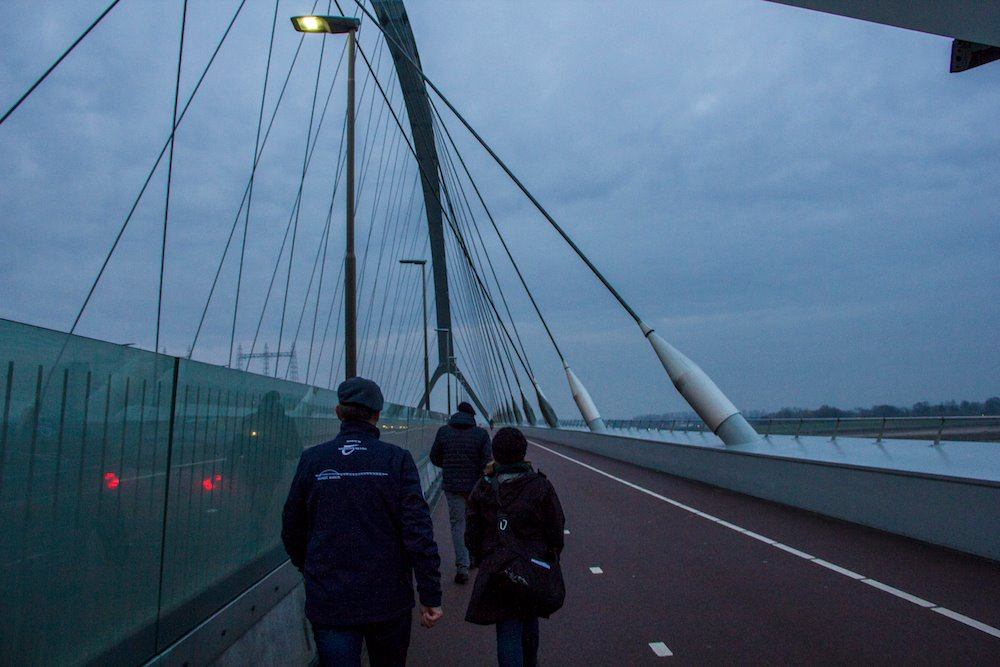
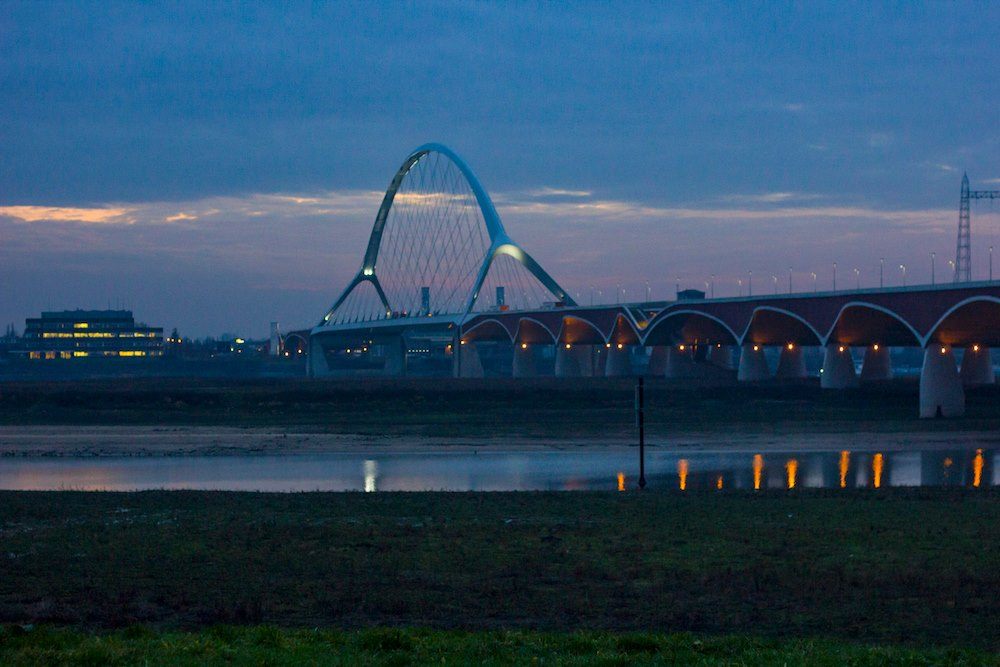
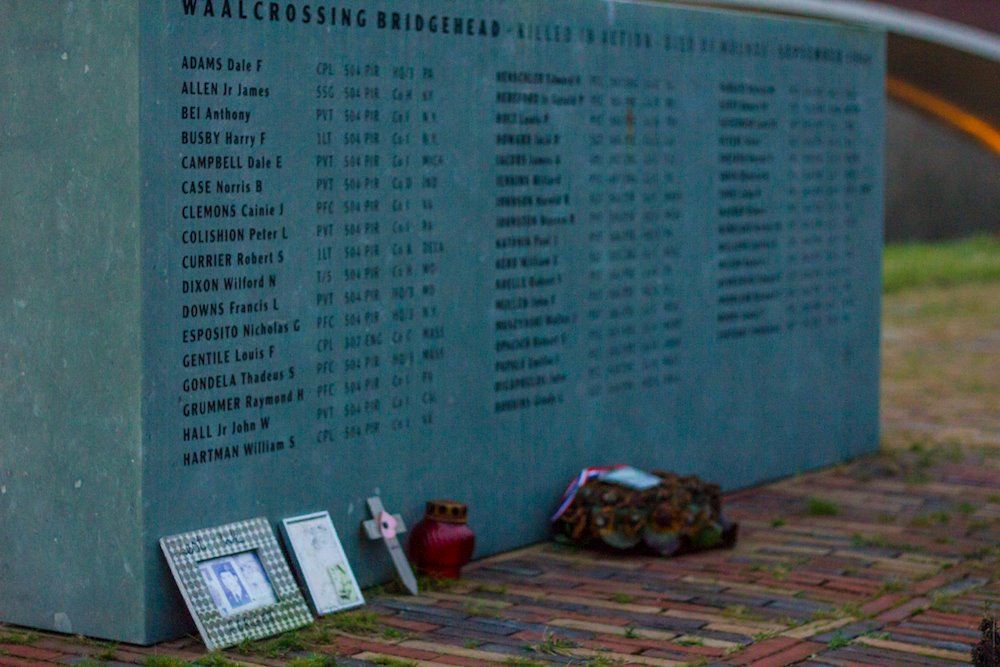
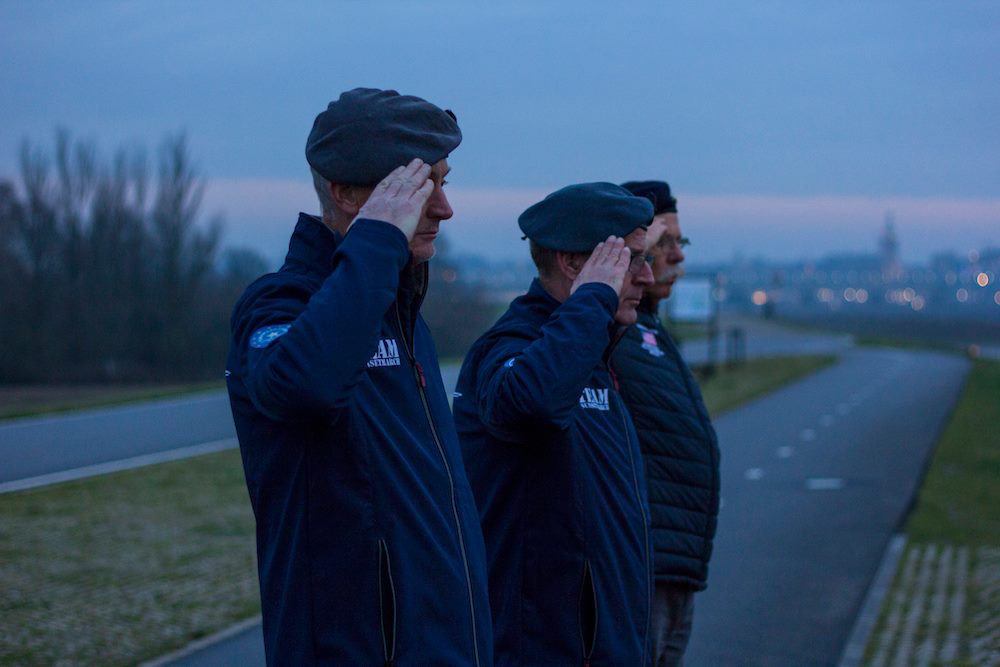
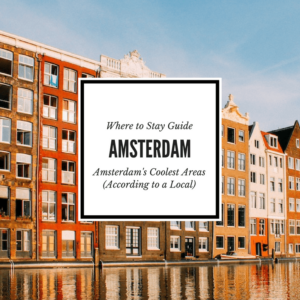
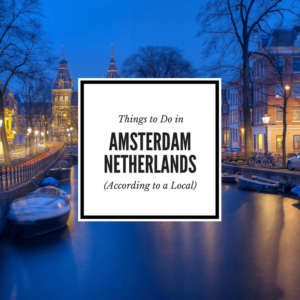
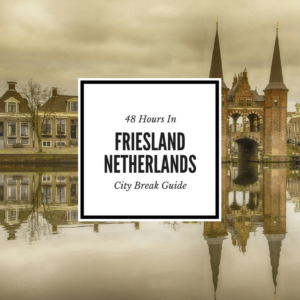
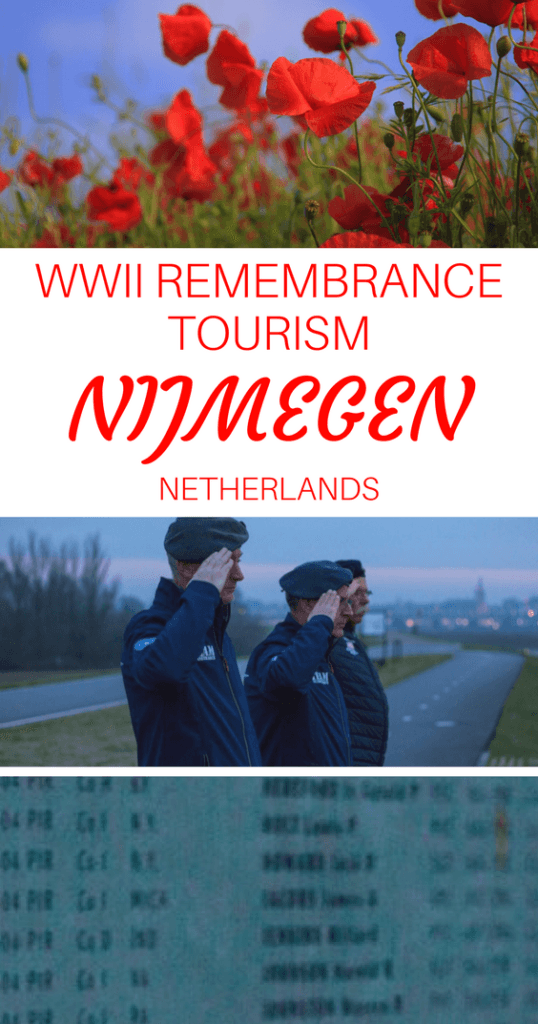
Pingback: 22 WWI & WWII Remembrance Tourism Destinations in Europe
Pingback: Mooie blog van Geoff and Katie Matthews over Sunset March – Sunset March
Pingback: 14-02-2017: Blog by Geoff and Katie Matthews about Sunset March – Sunset March
Pingback: 14-02-2017: Blog van Geoff and Katie Matthews over Sunset March – Sunset March